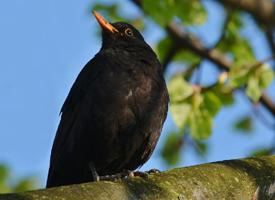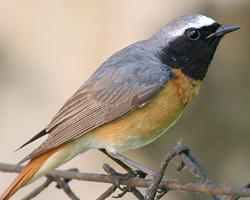
Description de l'animal
The Blue Rock Thrush (Monticola solitarius) is a small to medium-sized bird, belonging to the thrush family, Turdidae. It is known for its distinctive appearance and melodious song, which has captivated bird enthusiasts worldwide. This bird is particularly notable for its vibrant plumage, with males displaying a striking blue color that covers most of their body, while females and juveniles are more subdued in color, with a predominantly brown or grey hue interspersed with subtle hints of blue.Measuring approximately 21-23 cm in length, with a wingspan ranging from 34 to 38 cm, the Blue Rock Thrush is a robust and agile bird. It has a strong, straight bill that is well-adapted for its insectivorous diet, although it also feeds on small reptiles, fruits, and seeds. The legs and feet of this bird are strong, enabling it to adeptly navigate the rocky environments it prefers.
The natural habitat of the Blue Rock Thrush spans a wide range, from the rocky outcrops and cliffs of southern Europe, across the Middle East, to Asia and the northern parts of Africa. It is a migratory bird, with many populations moving to warmer regions during the winter months to escape the cold. The bird's preference for rugged terrains means it is often found in mountainous areas, where it can be seen perching prominently on rocks or darting in and out of crevices in search of food.
Breeding season for the Blue Rock Thrush typically begins in early spring, when males perform elaborate courtship displays, showcasing their vibrant plumage and singing melodious tunes to attract mates. Nests are usually constructed in crevices or hollows in rocky cliffs, where females lay between 3 to 5 eggs. Both parents are involved in the care of the young, which fledge approximately 2 to 3 weeks after hatching.
The song of the Blue Rock Thrush is a defining characteristic of this species. Males are known for their varied and complex vocalizations, which include a mix of melodious phrases, trills, and mimicry of other bird calls. The song serves multiple purposes, from attracting mates to establishing territories against rivals.
Despite facing threats from habitat loss and degradation, the Blue Rock Thrush has maintained a stable population across much of its range, thanks in part to its adaptability and the remote nature of its preferred habitats. It is listed as Least Concern on the IUCN Red List, indicating that it is not currently at significant risk of extinction.
In conclusion, the Blue Rock Thrush is a captivating bird, renowned for its stunning blue plumage, versatile diet, and melodious song. Its presence adds a splash of color and a symphony of sound to the rugged landscapes it inhabits, making it a cherished species among birdwatchers and nature enthusiasts alike.
Animaux similaires
Nouvelles photos d'animaux
Top 10 des animaux
- Dolphin gull (Leucophaeus scoresbii)
- Diana monkey (Cercopithecus diana)
- Moustached guenon (Cercopithecus cephus)
- Galápagos tortoise (Geochelone nigra complex)
- Japanese macaque (Macaca fuscata)
- Russian tortoise (Testudo horsfieldii)
- Stone loach (Barbatula barbatula)
- Greek tortoise (Testudo graeca)
- Common flying dragon (Draco volans)
- Vendace (Coregonus albula)


